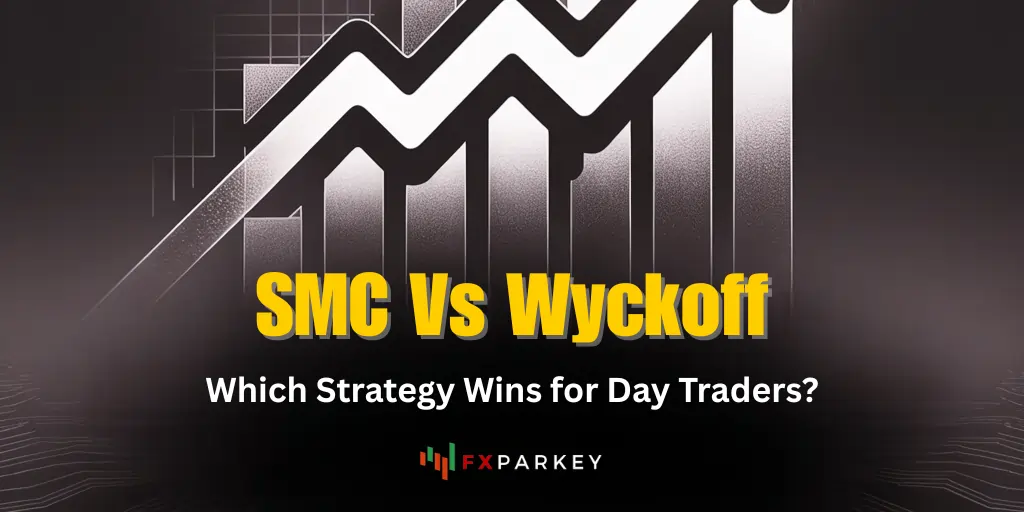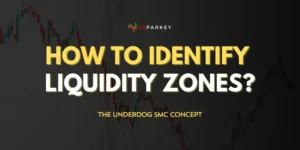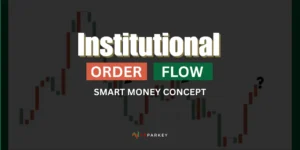If you’ve spent any time in day trading circles, you’ve likely come across the SMC vs Wyckoff debate.
Both strategies promise a structured path through the chaos of price movements, but which actually suits your style and risk tolerance?
By the end of this guide, you’ll have a clearer sense of how each method works, how they differ, and which might give you the best shot at profitable short-term trades.
Common Differences: SMC Vs Wyckoff

Before picking sides, it helps to pin down what these strategies are trying to do. Smart Money Concepts (SMC) focuses on what big institutions (like banks or hedge funds) may be doing behind the scenes. Think of it as reading the footprints of bigger traders and riding their momentum. The Wyckoff method, on the other hand, zeroes in on market cycles of accumulation, distribution, and general supply and demand shifts over time.
At first glance, both methods share a common purpose: to help you catch a wave of price direction and exit before it flattens out. The key difference lies in how each system interprets price action. SMC often highlights liquidity pools and possible manipulative spikes, whereas Wyckoff breaks down the market into sequential phases. When you study these frameworks, you’re arming yourself with structured models rather than making purely emotional trades.
Neither approach is a guaranteed ticket to riches. No strategy is. But getting to know each one will let you set realistic expectations, refine your entries and exits, and—most importantly—help you avoid the random guesswork that plagues many beginner day traders.
Look at SMC fundamentals

Smart Money Concepts revolve around the idea that the market is heavily influenced by the “smart money”—the big players who move price deliberately. Here’s the concept in simpler terms: if you can identify where institutional buyers and sellers are likely to be, you can better predict major price swings.
Why Institutions Matter?
You might picture a marketplace where everyone has equal sway, but that’s rarely the case. Banks, hedge funds, and other large entities can shift prices by placing large orders. They also have an incentive to disguise their moves so smaller traders don’t jump on board too soon. By analyzing certain patterns in price action—like abrupt spikes or extended consolidations—SMC traders aim to follow the institutional footprint.
Common SMC Elements
SMC can feel advanced if you’re coming from something like basic support and resistance lines. Still, the core idea remains straightforward: you want to trade in the same direction as the largest participants.
If you manage risk properly, this can help you dodge getting whipsawed by sudden market manipulation.
Review Wyckoff Approach

The Wyckoff method is older, spanning all the way back to Richard Wyckoff’s studies in the early 1900s. Even with its classical roots, it remains popular among modern traders, especially those seeking to understand overall market phases. Wyckoff attempts to map out how big players quietly accumulate positions (buy) or distribute them (sell) while retail traders barely notice—until the price makes its big move.
The Four Phases
Wyckoff’s theory breaks down market movement into four main parts: accumulation, markup, distribution, and markdown. Accumulation suggests that strong hands (like institutions) slowly build positions at lower prices. Markup is when the price rallies. Distribution is the unloading of those positions to enthusiastic buyers. Markdown is the slide in price once the “big money” has exited.
Key Wyckoff Concepts
For day traders, Wyckoff can clarify whether you’re in the middle of a genuine rally or a false breakout. If you see that a market is likely in the distribution phase—despite a seemingly bullish price—your short trades could be timed for when the real drop happens.
Compare Key Principles
You’ll notice that both SMC and Wyckoff revolve around the influence of large traders. However, they apply different lenses to interpret market data. Here’s a quick table for a side-by-side snapshot of SMC vs Wyckoff:
| Aspect | SMC (Smart Money Concepts) | Wyckoff Method |
|---|---|---|
| Main focus | Institutional footprints, liquidity zones, order blocks | Market cycles, accumulation, and distribution phases |
| Entry triggers | Breaks of structure and liquidity sweeps | Confirmed breakouts/springs after testing supply/demand |
| Market psychology | Sees price moves as manipulative attempts by big players | Emphasizes phases of crowd psychology (Composite Operator) |
| Complexity | Can be intricate, with multiple technical terms | Traditional framework, though still detailed |
| Time frame suitability | Works on multiple time frames, often used intraday | Popular among swing traders, but day traders use it too |
If you’re a day trader seeking short, momentum-driven moves, you’ll probably pay close attention to both systems’ breakout signals. Smart Money Concepts can offer a more immediate view of institutional order blocks that might occur within the day. Wyckoff, by contrast, helps confirm if the day’s price spikes align with a bigger cycle or if they’re more likely to fizzle out.
Weigh Pros and Cons
Both methods come with distinct pros and cons. Whether they’ll work for you depends on your skill set, your resources, and how patient you are with chart analysis.
Upsides of SMC
Downsides of SMC
Upsides of Wyckoff
Downsides of Wyckoff
Your choice might boil down to how you prefer to read charts. If you value a concise model for intraday liquidity and are comfortable with advanced concepts, SMC can be a great fit. If you find it easier to think in terms of overarching market cycles and volume movements, Wyckoff’s structure may feel more natural.
Use them in Day Trading

It’s one thing to know the theory, but how do you apply SMC vs Wyckoff in your day-to-day trades? Let’s walk through a few pointers that might help you choose or even blend both approaches.
- Start with a Top-Down Analysis:
- Even if you trade on a 5- or 15-minute chart, glance at the higher time frames first. This is especially helpful for Wyckoff, since you’ll see bigger accumulation or distribution patterns.
- If you spot a clear bullish structure on the daily chart, SMC can help you pinpoint day-trading entry zones aligned with that broader trend.
- Watch for Liquidity Grabs before Placing Trades:
- SMC suggests that major market players often trigger stop losses to gather liquidity. If you notice a quick spike that touches a known cluster of stops, be ready for a rapid reversal.
- Combine this with Wyckoff’s spring concept. After a spring, volume might confirm. if the move is genuine or if you should wait.
- Use Volume as a Filter:
- Wyckoff was big on analyzing volume changes to weed out fake moves. If a breakout occurs without a spike in volume, it might be unconvincing.
- SMC can benefit from volume checks, too. For instance, an order block retested with low volume might suggest weakness in continuation.
- Set Clear Risk Parameters:
- Because both approaches aim to catch major turning points, your stop loss placement matters. Consider placing stops at or near recent liquidity zones to
- avoid random whipsaws.
- Risk small at first. Day trading can be fast-paced, and illusions of quick profits can end in over-leveraging.
- Journal your Trades:
- If you’re testing out both strategies, write down what you see, why you entered, and the result.
- Over time, patterns emerge. Maybe SMC signals work better in volatile sessions (like after major news), while Wyckoff setups shine in steadier markets.
You don’t need to pick only one system forever. Many traders meld key aspects of SMC with the structural insights of Wyckoff. In that sense, you might find SMC giving you a sharper intraday focus while Wyckoff keeps you grounded in the bigger picture. Experiment with combining the two, but be sure to keep your approach simple enough to avoid confusion.
Pick Your Best Path

So, which strategy really wins for day traders? Honestly, it depends on you. If you live for quick, precise entries, Smart Money Concepts can deliver those eureka moments as you pinpoint a fresh order block. If you gravitate toward a more holistic market narrative, Wyckoff’s cyclical framework could be your bread and butter.
What matters most is consistency in your methodology and discipline in your execution. Jumping between multiple strategies without mastering any of them can lead to frustration and unnecessary losses. Whichever route you choose, start small. Try a handful of trades, track the results, and refine your process. Don’t forget to account for real-world influences too—economic news, earnings reports, or sudden market sentiment shifts can overshadow even the most careful technical setup.
Take the time to reflect on your comfort level with each technique. Day trading puts you in a world of split-second decisions, so it’s crucial to trust the signals you rely on. Whether you stand by the liquidity-based approach of SMC or find clarity in Wyckoff’s phases, you’re learning how to navigate market moves with a plan.
Give each method a fair shot and see which resonates with your mindset. With the right discipline, risk management, and adaptability, either strategy can open the door to more informed trades and steadier results. Your journey may even lead you to fuse elements of both, creating a customized roadmap that fits your style. That’s the beauty of trading—it’s flexible, evolving, and always ready for you to fine-tune.






